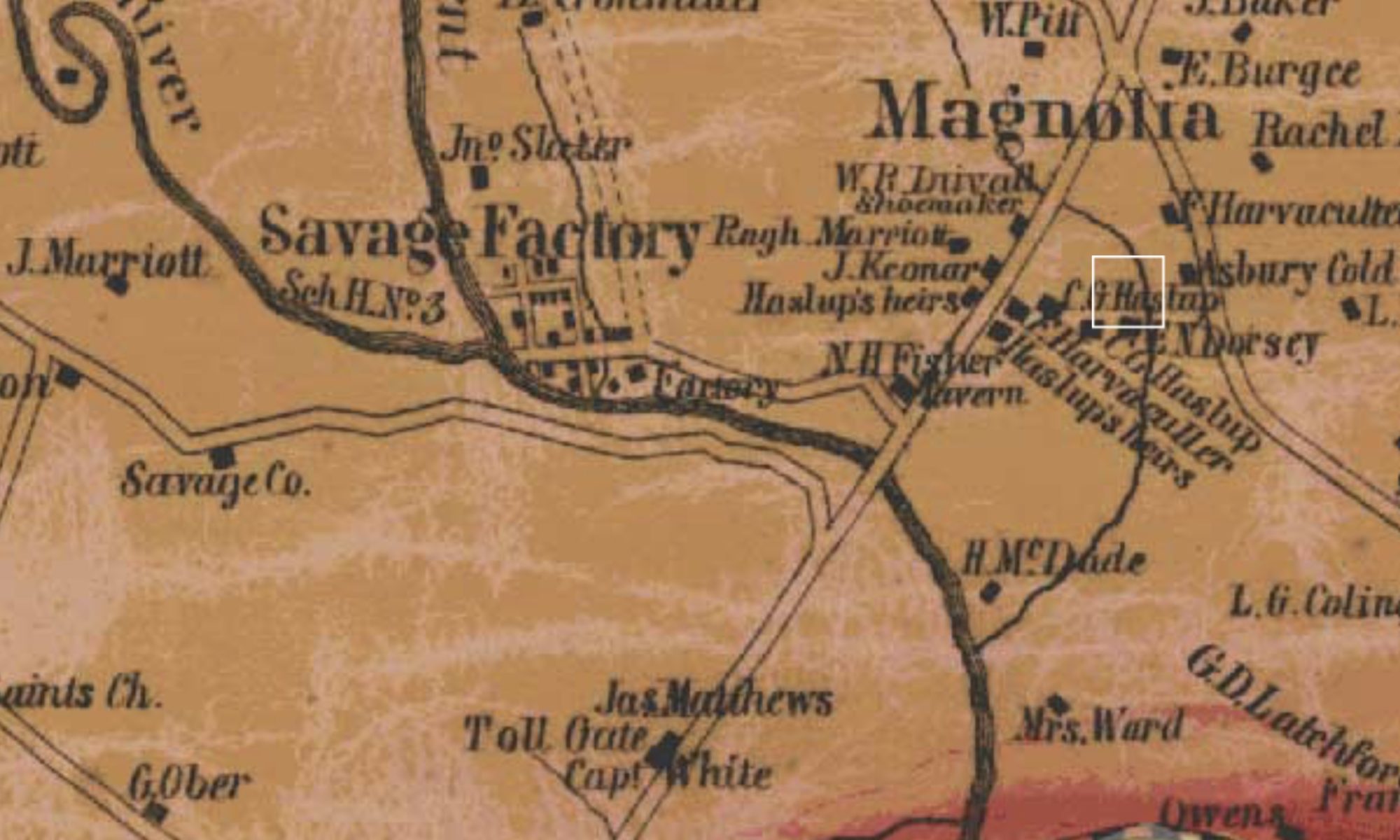During February in the year 1847, Charles G. Haslup near Savage Factory in what is today Howard County, Maryland made arrangements to place an advertisement in Baltimore’s The Sun newspaper. A few days before on Monday, David self-liberated from Charles’ enslavement. As can be seen in the advertisement, Charles was offering $20 to anyone who could find David and take him to a jail so that he could be returned to his position of servitude. But what was David’s position? The advertisement doesn’t provide any information about that, but does provide a description of David which can be read.
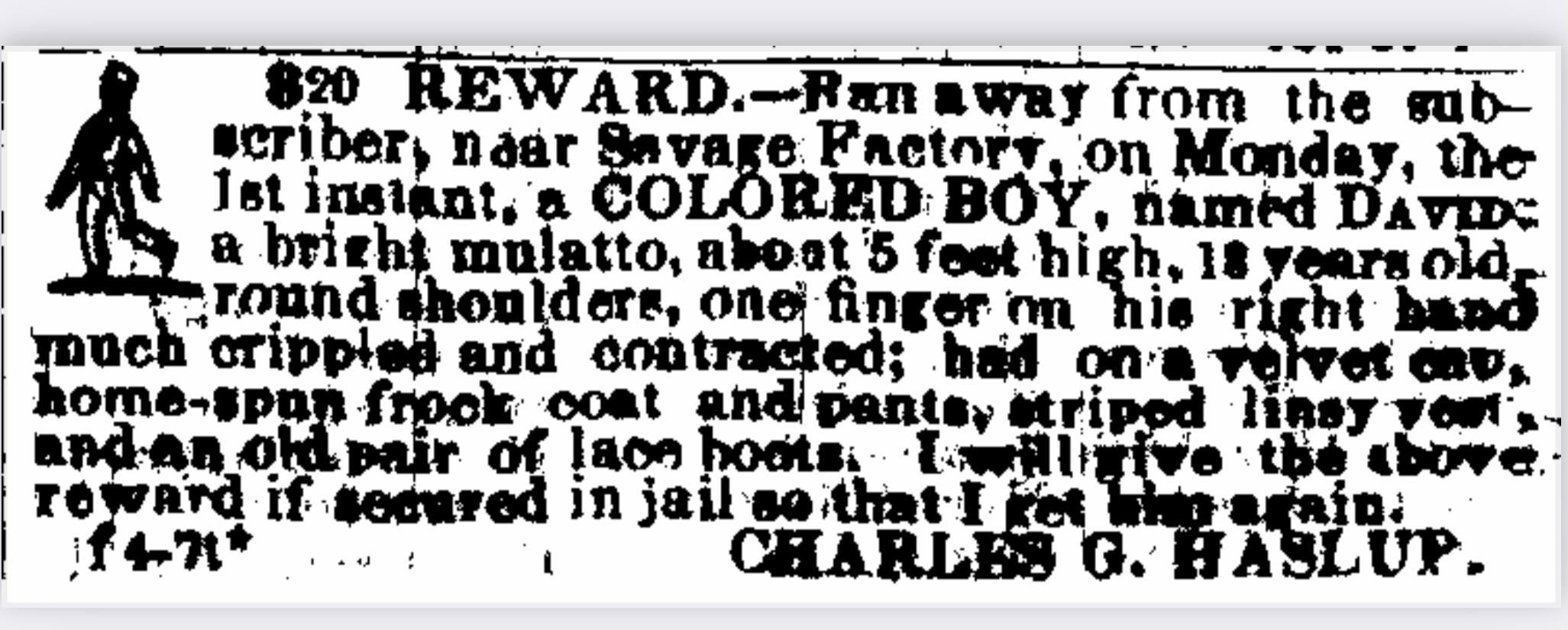
David had been enslaved by Haslup, a name known by many in the local area due to him having been a Constable and Tax Collector. Imagine an eighteen year old, five foot tall “bright mulatto” with a velvet cap and striped vest on wearing an old pair of lace boots, and you’ll be meeting David when he decided to secure his freedom on his own. Charles Haslup was one of the people who placed his name onto the list of enslavers who wished to be financially compensated for his “losses” that were the result of slavery being ended for him by the state.
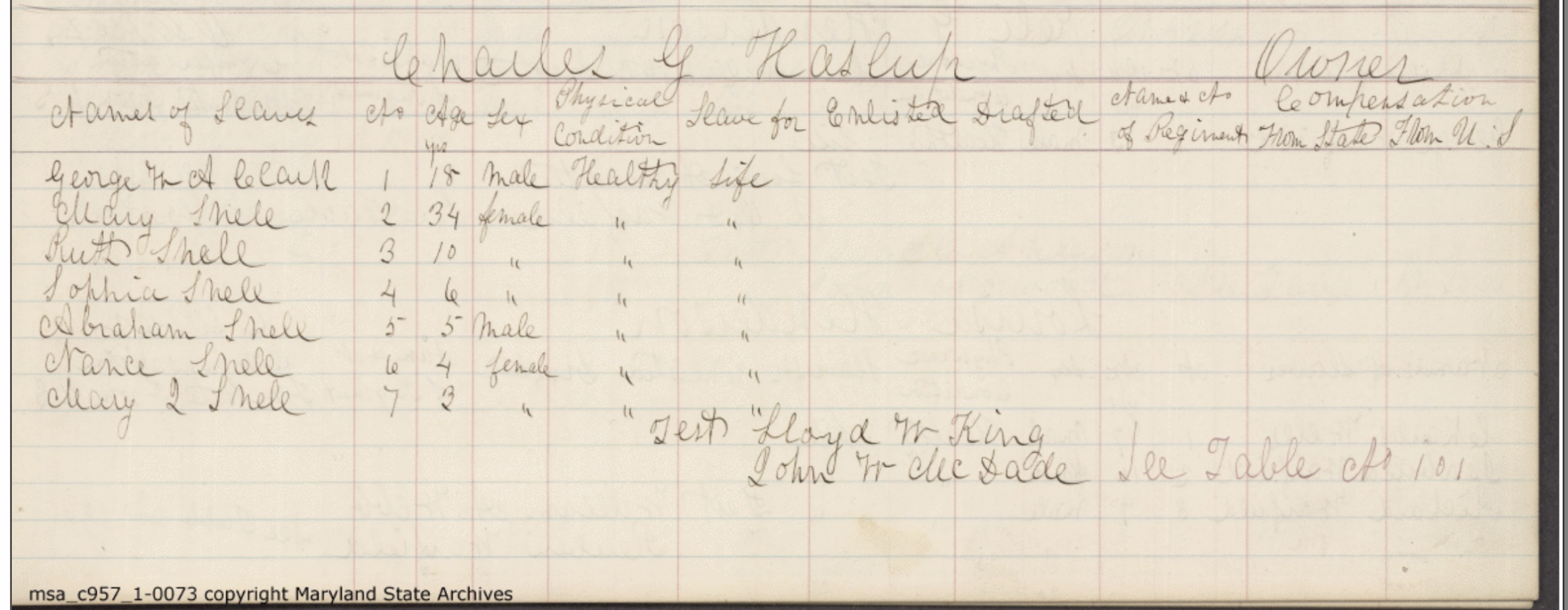
David’s name didn’t appear on Haslup’s list, but seven other people’s names were listed. Does that mean that David got away? No, it does not.
The reason that people shouldn’t make assumptions when viewing runaway advertisements is that it’s usually only a small part of the story. Was Haslup placing the ad because he was the enslaver, or was he just the agent for someone else? In David’s case, there was a fascinating story to be assembled about him that I will share here so that people know a bit more about what is involved when trying to get this right about the local Howard County story of this particular type of self liberation from enslavement.
First, David was captured by someone and put into jail to await Haslup. He was actually in the jail when Haslup placed the advertisement in The Sun. That probably resulted in a bunch of people scouring the area looking for someone that fit David’s description because Haslup or his agent paid to have the advertisement run seven times, though a $20 reward wasn’t much even for that time period. Was there a reason that it was so low? Maybe. It turns out that this wasn’t the first time that David had tried to self liberate from Haslup. Because of that, Haslup made a request to the court to be able to sell David out of the state of Maryland.

Here’s where research patience and persistence come in handy. Haslup’s request wasn’t acted upon right away, and every day that David was in the jail meant the accumulation of jail fees that he’d be responsible for paying. So, David was released on February 12th, and back to Haslup he went. But there’s still more…
David didn’t get sold by Haslup. In 1848, Charles G. Haslup became the Sheriff of the Howard District and he’d remain the Sheriff until Howard became its own county in 1851.

While Sheriff, he made another request of the court regarding David in May of 1849. The Sheriff reported to have gotten possession of David’s mother through his father’s estate. David’s mother had been freed by this time, and she was recorded on the 1840 census as the free Black head of her household. Letty Daily had two boys under the age of ten living in her household with her, both born free.

David was therefore still enslaved while he had younger siblings and a mother that were free. These were the circumstances that existed when David kept leaving Haslup’s. In 1849, Haslup’s legal request sought to sell him out of the state so that he could be compensated for the trouble and money he believed David’s actions had cost him. David was at the trial and heard it all. The court ruled to extend David’s enslavement period to a total of thirty two years, and authorized Haslup to sell him in or out of the state.
That’s not the end of the story though either.
By the time the 1850 census taker came around, he recorded the occupants of Sheriff Haslup’s household. His wife and children were recorded along with a sixteen year old girl he was enslaving.


Also in the household was Letty’s son David, recorded to be free.
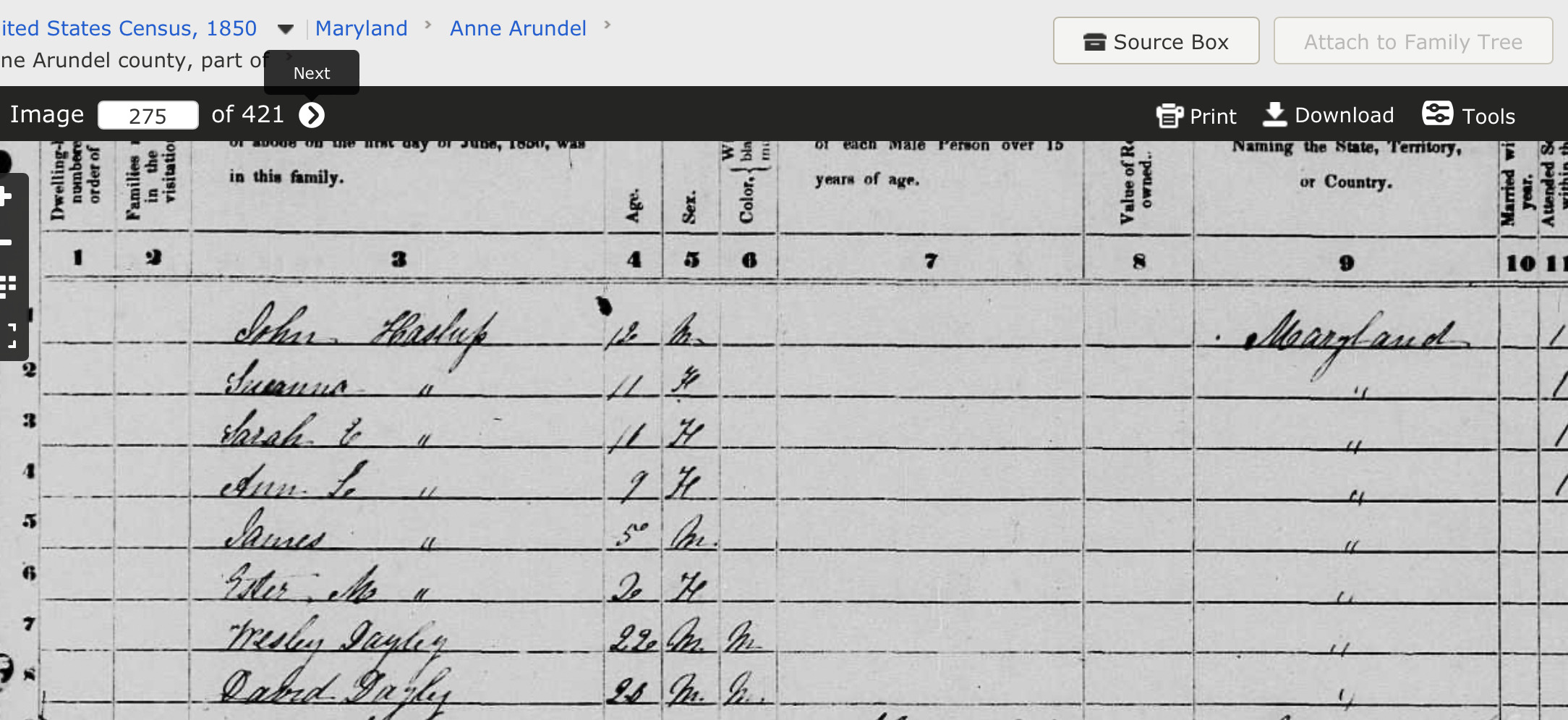
What’s the likely conclusion as to how? Letty purchased her son David’s freedom from Sheriff Haslup, and then negotiated for his hire along with her son Wesley by the sheriff. Those two boys under ten recorded in her 1840 household? They may have been Plummer and Nathan who each asked that certificates of freedom be issued to them in 1860.
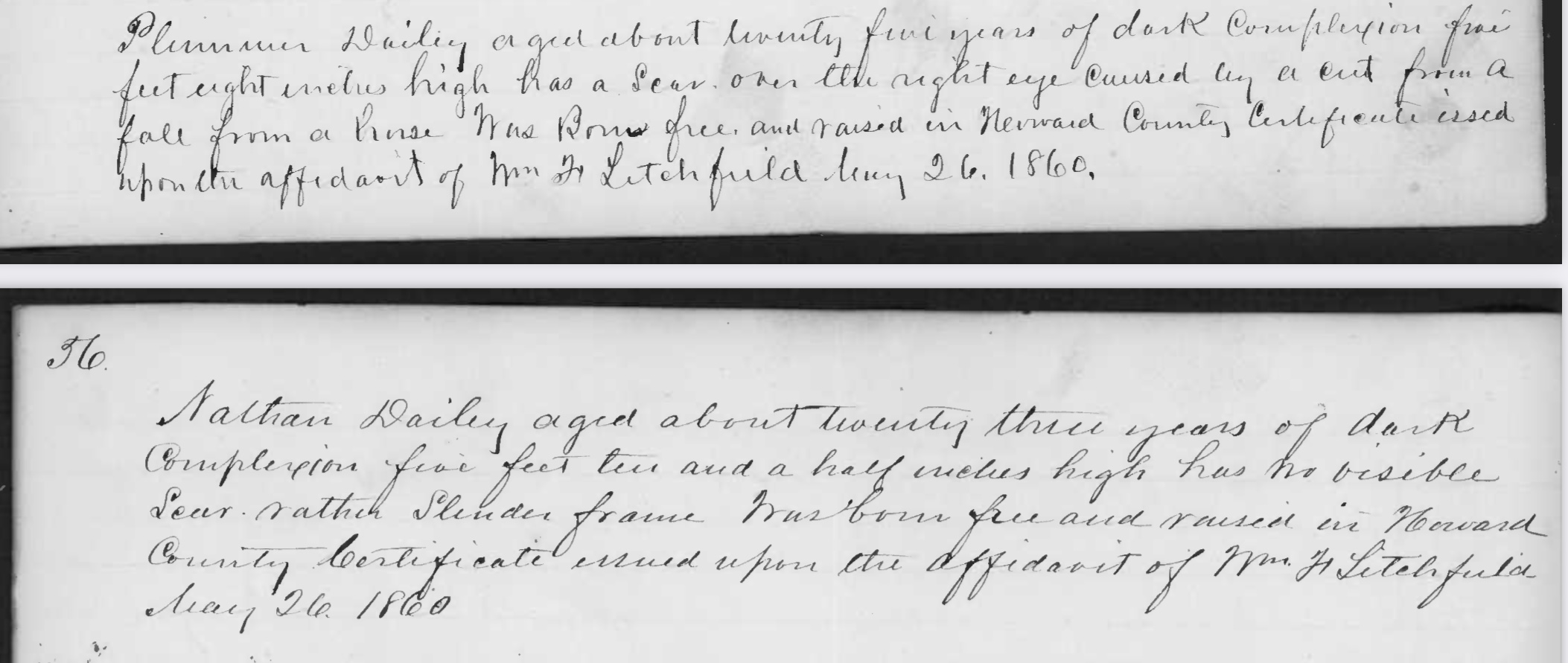
Those connections are for another day and project. Our work will live online ultimately so that schools, etc can access and learn from these stories but we will also make them into a publication to achieve the same goal. We began our The Resistance Project some time ago by collecting data from multiple sources. Our event on September 1st is the public introduction of it. There are easily more than a hundred “runaway” situations involving the land that is now Howard County, and many were never advertised. Most had interesting stories like David’s, all were unique. The determination for where David may have been when he self liberated will lie from what property Haslup owned at that time. On the 1860 map, you’ll see that there are two for CG Haslup. Must be fully researched, and will be.
Sheriff Haslup died in 1876 and is buried in Savage at their family cemetery.


